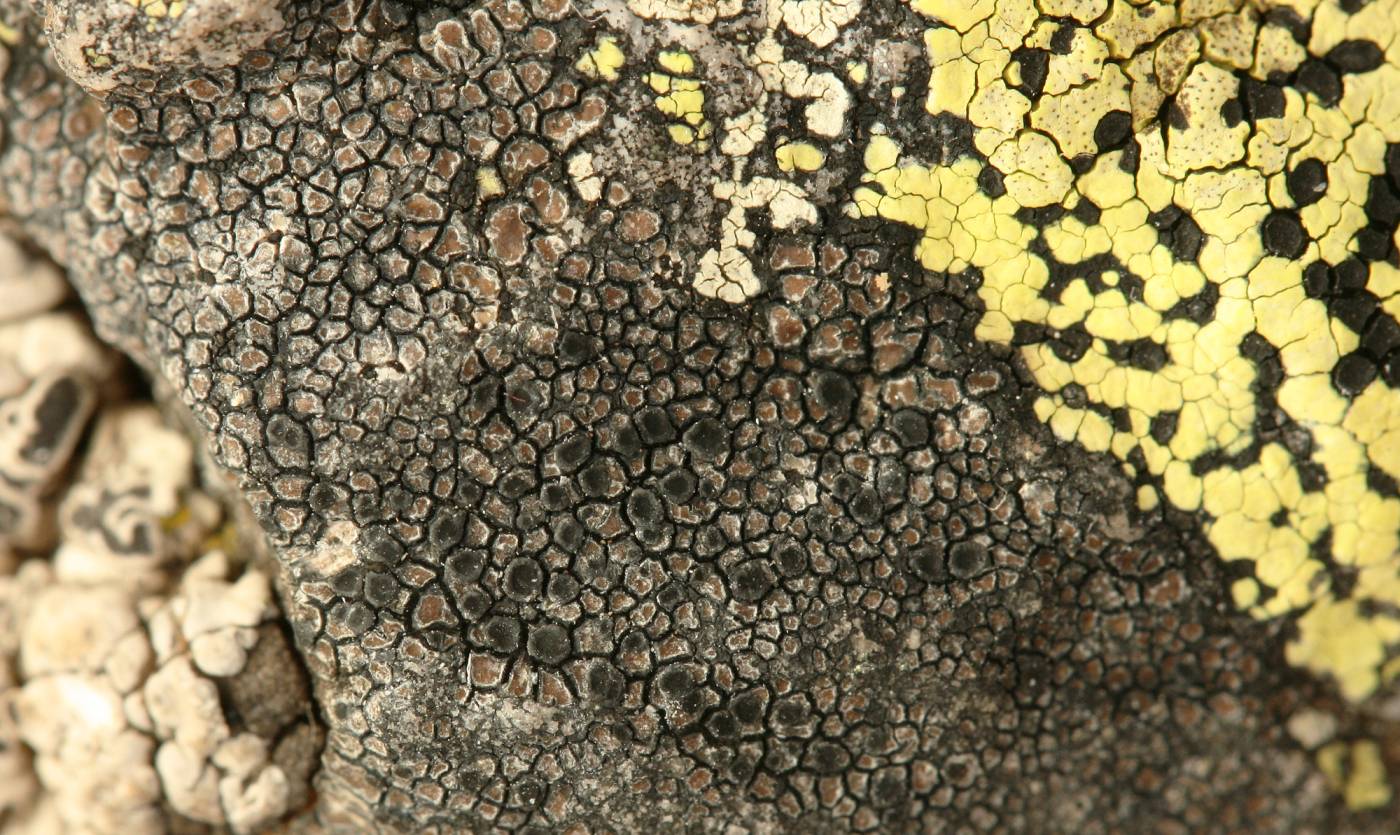This arctic-alpine taxon usually occurs on hard exposed silicates, less often also on slightly calcareous rocks. It covers a variety of morphotypes and chemotypes, out of which some were in the past and some sometimes still are recognized as individual species. The well-developed specimens are conspicuous by their shiny areolate thalli with immersed black apothecia. Thallus is often bordered by markedly black prothallus. From the common and also very variable taxon L. fuscoatra it is best distinguished chemically, as it lacks gyrophoric acid both in exciple and thallus. Lecidea atrobrunnea grows in Europe at higher elevations, around and above the upper tree line. The species has been found also in Antarctica, New Zeeland or in mountains of tropical Africa (Hertel 2006). In the Czech Republic, it has been reported only from higher parts of the Krkonoše and Jeseníky Mountains. Hertel & Leuckert (2008) confirmed the occurrence of chemical race with a syndrome of confluentic acid in the country, which they classify as a nominate subspecies, L. atrobrunnea s. str.
Literature: Hertel H. (2006): World distribution of species of Lecidea (Lecanorales) occurring in Central Europe. – In: Lackovičová A., Guttová A., Lisická E. & Lizoň P. [eds], Central European lichens – diversity and threat, p. 19–73, Mycotaxon Ltd., Ithaca. Hertel H. & Leuckert C. (2008): Lecidea atrobrunnea in Europe and adjacent parts of Asia and Africa. – Sauteria 15: 215–238.
taxonomic classification:Ascomycota → Lecanoromycetes → Lecanorales → Lecideaceae → Lecidea
Red List (Liška & Palice 2010):DD – data deficient
Red List (Malíček 2023):DD – data deficient
Occurrence in the Czech Republic
All records: 2, confirmed 1. One click on a selected square displays particular record(s), including their source(s).
